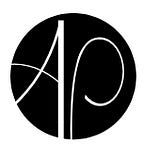Control charts: what are they and how to use them.
Although it may sound counter-intuitive, variation in a process’s output is not an inherently wrong concept. It’s normal to expect a certain degree of variation to all processes that don’t necessarily signal that it is falling out of control. Control charts are useful because they help us draw the line into understanding what kinds of observed variation are normal, even healthy, and what kind of observed variation can be considered cues of growing chaos.
What are the four states of a process?
There are four stages to a process’s quality control life cycle: (1) ideal, (2) threshold, (3) brink of chaos, (4) state of chaos/out of control. A process will start in the ideal state and slowly moved towards a state of chaos through entropy.
A process in the ideal state is considered to be predictable and in control. A process in the threshold could statistically be considered in control as well because the output variations, in their majority, don't necessarily fall outside of the expected values. However, it does have a mild additional level of unpredictability to it. A process on the brink of chaos is at the edge of producing a defect or mistake. It is unpredictable and unstable. A process in the state of chaos produces defects or mistakes regularly, it's not statistically predictable, and it’s stable on its unpredictability.
How can control charts help us identify the state at which the process we wish to analyze lies?
The process of constructing a control chart begins with a time series plot. We draw the observed process outputs and add a line in the middle to indicate where the average of overtime lies (this line is also called the “process location”). The second step is to construct upper and lower control limits based on observed historical data, and plot them with the objective of detecting how close to the limits each of the data points lie. The limit calculation is very simple: observed standard deviation of the process output multiplied by three, and added/subtracted (UCL/LCL) to the observed process output average.
Statistics and the normal distribution for interpretation:
Assuming the normality of the process output we analyze, we can use the normal distribution to make inferences about the probability of having an observation fall within x number of standard deviations above or below the drawn average (with only 5% of observing one outside two standard deviations).
Individual and moving range chart (I-MR):
Used when observations are not collected in groups — this is when we collect observations one at a time.
the I-MR chart consists of two parts: the individual plot (upper) and the moving range plot (lower). The individual plot is a time series representation of each individual observation. In the middle, the individual plot draws a straight line where the mean value of the outputs we are monitoring lie (also called the process center), as well as the UCL and LCL we discussed earlier in this article. The moving range plot complements the earlier by showing the variation that exists (the moving range of change) between two consecutive observations. The moving range plot also shows a mean value (process center) and lower and upper control limits (UCL and LCL).
